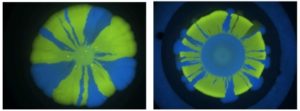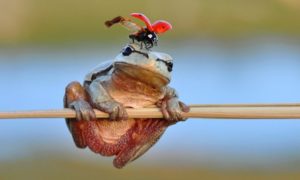The Eco-Evolutionary Dynamics of Fluctuating Populations (EEDFP) research project is a joint EPSRC-NSF funded project with collaborators from the University of Leeds, Virginia Tech, and Imperial College London.
Understanding the origin of species diversity and the evolution of cooperation is a major scientific riddle that resonates with numerous societal concerns, like the rise of antimicrobial resistance or the loss of biodiversity, and is even relevant to epidemiology. Population dynamics traditionally ignores fluctuations and considers static and homogeneous environments. However, fluctuations arising from randomly occurring birth / death events (demographic noise) and the change of environmental conditions (environmental variability), together with the spatial dispersal of species, play a crucial role in understanding how the size and composition of a population jointly evolve in time, i.e. its eco-evolutionary dynamics. Here, we focus on the ubiquitous situation where the eco-evolutionary dynamics of fluctuating populations is shaped by the coupling of demographic noise and environmental variability.
The interdependence of environmental variability and demographic noise is poorly understood but of great importance in microbial communities, which are often subject to sudden and extreme environmental changes. In particular, modelling population of varying size and composition subject to changing external factors is crucial to understand the evolution of microbial antibiotic resistance. In fact, pharmacodynamics largely focuses on the deterministic description of large well-mixed bacterial populations, but fails to account crucial stochastic effects arising in small communities. When  antibiotics reduce a large population to a very small one but fail to eradicate it, surviving cells may replicate and restore infections, and these survivors are likely to develop antibiotic resistance. Owing to the small population size the details of the outcome are subject to large fluctuations. This important example clearly illustrates the need for theoretical advances to shed light on extinction and resistance scenarios in fluctuating environments.
antibiotics reduce a large population to a very small one but fail to eradicate it, surviving cells may replicate and restore infections, and these survivors are likely to develop antibiotic resistance. Owing to the small population size the details of the outcome are subject to large fluctuations. This important example clearly illustrates the need for theoretical advances to shed light on extinction and resistance scenarios in fluctuating environments.
 The central goal is to develop a suite of theoretical tools that will allow us to describe biologically relevant evolutionary models, and to make testable predictions in laboratory-controlled experiments. For this joint effort, crucially building on the team’s unique complementary expertise, we will adopt a multidisciplinary approach combining various mathematical tools and will consider models of an increasing level of complexity. Many of the features of our theoretical models, such as switching environments, time-varying population sizes, public good production, etc. can be reproduced in laboratory experiments. This opens the door to a host of exciting possibilities to address theoretical questions of direct biological relevance, and to experimentally test various predictions of our theoretical models.
The central goal is to develop a suite of theoretical tools that will allow us to describe biologically relevant evolutionary models, and to make testable predictions in laboratory-controlled experiments. For this joint effort, crucially building on the team’s unique complementary expertise, we will adopt a multidisciplinary approach combining various mathematical tools and will consider models of an increasing level of complexity. Many of the features of our theoretical models, such as switching environments, time-varying population sizes, public good production, etc. can be reproduced in laboratory experiments. This opens the door to a host of exciting possibilities to address theoretical questions of direct biological relevance, and to experimentally test various predictions of our theoretical models.
